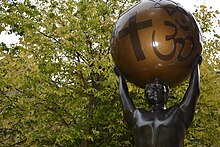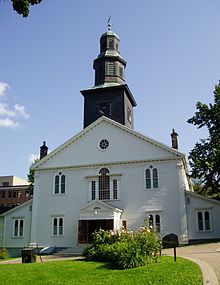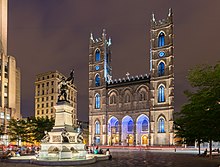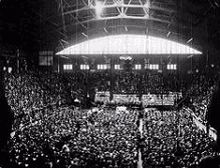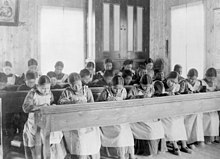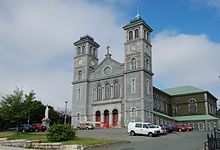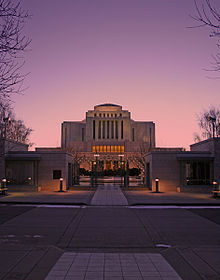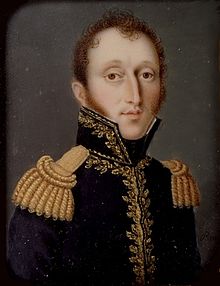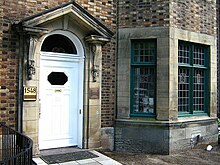Religion in Canada
[12] Before the European colonization, a wide diversity of Native religions and belief systems of the Indigenous peoples in Canada were largely animistic or shamanistic.
[17] During the colonial period, the French settled along the shores of the Saint Lawrence River, specifically Latin Church Catholics, including a number of Jesuits dedicated to converting indigenous peoples.
[32] Nevertheless, the rise of irreligion within the country and influx of non-Christian peoples has led to a greater separation of government and religion,[33] demonstrated in forms like "Christmas holidays" being called "winter festivals" in public schools.
[37] Christmas and Easter are nationwide holidays, and while Jews, Muslims, Hindus, Buddhists and other religious groups are allowed to take their holy days off work, they do not share the same official recognition.
Before the arrival of Europeans, the Indigenous peoples followed a wide array of mostly animistic religions and spirituality;[13][41][14][42][15][43][44] "including the presence of creation stories, the role of tricksters or of supernatural beings in folklore and the importance of sacred organizations".
After the Expulsion of the Acadians beginning in 1755 a large number of New England Planters settled on the vacated lands bringing with them their Congregationalist belief.
[48] During the 1770s, guided by Henry Alline, the New Light movement of the Great Awakening swept through the Atlantic region converting many of the Congregationalists to the new theology.
[50][51][52] The Quebec Act of 1774 acknowledged the rights of the Catholic Church throughout Lower Canada in order to keep the French Canadians loyal to Britannic Crown.
[54] While Anglicans consolidated their hold on the upper classes, workingmen and farmers responded to the Methodist revivals, often sponsored by visiting preachers from the United States.
His technique combined restrained emotionalism with a clear call for personal commitment, coupled with follow-up action to organize support from converts.
Caughey successfully bridged the gap between the style of earlier camp meetings and the needs of more sophisticated Methodist congregations in the emerging cities.
The movement invoked Anglophone nationalism by linking donations with the Victory Loan campaigns of the First World War, and stressed the need for funds to Canadianize immigrants.
However the campaign exposed deep divisions among Protestants, with the traditional Evangelists speaking of a personal relationship with God and the more liberal denominations emphasizing the Social Gospel and good works.
The social environment is more conservative, somewhat more in line with that of the Midwestern and Southern United States, and same-sex marriage, abortion, and common-law relationships are less widely accepted.
[80] This acknowledgment was followed by a visit by Pope Francis who apologized for Church members' role in what he labeled the "oppression, mistreatment and cultural genocide of indigenous people".
Cross-national surveys of religiosity rates such as the Pew Global Attitudes Project indicate that, on average, Canadian Christians are less observant than those of the United States but are still more overtly religious than their counterparts in Western Europe.
The rates for weekly church attendance are contested, with estimates running as low as 11% as per the latest Ipsos-Reid poll and as high as 25% as per Christianity Today magazine.
As well as the large churches—Catholic, United, and Anglican, which together count more than half of the Canadian population as nominal adherents—Canada also has many smaller Christian groups, including Eastern Orthodoxy.
Southwest Ontario has seen large numbers of German and Russian immigrants, including many Mennonites and Hutterites, as well as a significant contingent of Dutch Reformed.
As Mainline Protestants and Catholics have experienced drastic losses over the past 30 years, others have been expanding rapidly: overall by 144% in ‘Eastern' religions during the 1981–1991 decade.
[100] For some Protestant denominations, adapting to a new secular context has meant adjusting to their non-institutional roles in society by increasingly focusing on social justice.
[102] As well a multicultural focus on the churches part may include non-Christian elements (such as the inclusion of a Buddhist priest in one incident) which are unwelcome to the transplanted religious community.
This high commitment would seem to translate into the kind of political power evangelicals in the United States enjoy but despite Canada's historically Christian background as Beaman notes neatly "...[forming] the backdrop for social process"[106] explicit religiosity appears to have not effectively moved the government towards legal discrimination against gay marriage.
[123] Today, more than 75% of the world's Hutterite colonies are located in Canada, mainly in Alberta, Manitoba and Saskatchewan, the rest being almost exclusively in the United States.
[156] In 2007, the CBC introduced a popular television sitcom called Little Mosque on the Prairie, a contemporary reflection and critical commentary on attitudes towards Islam in Canada.
In June 1939 Canada and the United States were the last hope for 907 Jewish refugees aboard the steamship SS St. Louis which had been denied landing in Havana although the passengers had entry visas.
Skelton, Undersecretary of State for External Affairs, dated June 16, 1939, "No country could open its doors wide enough to take in the hundreds of thousands of Jewish people who want to leave Europe: the line must be drawn somewhere."
Druze practise Druzism, a monotheistic religion encompasses aspects of Islam, Hinduism, Christianity, Judaism and Greek philosophy, among influences.
British Columbia, Manitoba, and Yukon hold the distinction of being three of the only four administrative divisions in the world with Sikhism as the second most followed religion among the population.
It follows a strict version of halakha, including its own unique practices such as lengthy prayer sessions, arranged marriages between teenagers, and head-to-toe coverings for females.

